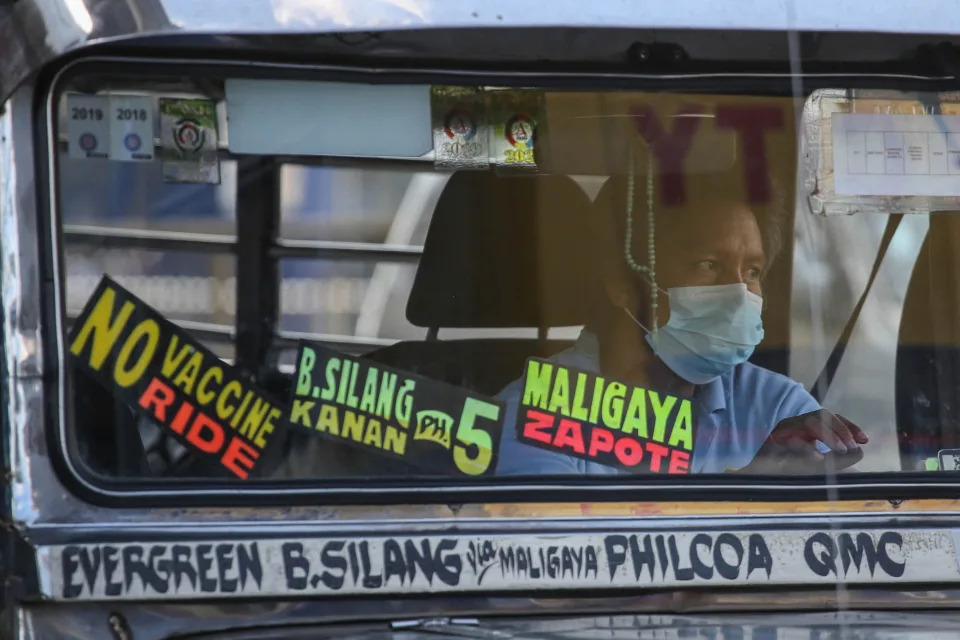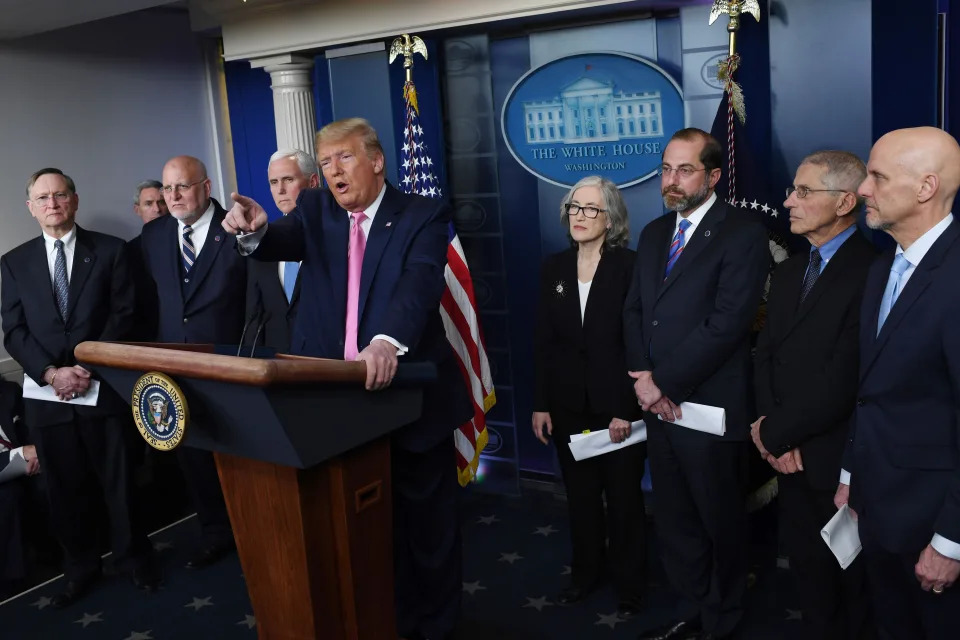CBC
Fri, June 14, 2024

Prime Minister Justin Trudeau and Indian Prime Minister Narendra Modi meet on the sidelines of the G7 summit in Apulia, Italy on Friday, June 14, 2023. (Narendra Modi/X - image credit)
Prime Minister Justin Trudeau and India's Prime Minister Narendra Modi have met for the first time since Trudeau publicly accused Modi's government of involvement in the assassination of a Canadian Sikh activist.
Modi posted a photo to his 98 million followers on X, formerly Twitter, of the two leaders shaking hands on Friday on the sidelines of the G7 summit in Italy.
"Met Canadian PM @JustinTrudeau at the G7 Summit," he wrote.
No formal bilateral meeting between the two leaders was scheduled.
A spokesperson for the Prime Minister's Office said the two leaders had an "interaction on the margins of the G7."
"The Prime Minister congratulated Prime Minister Modi on his re-election and the leaders had a brief discussion on the bilateral relationship," Ann-Clara Vaillancourt said in a media statement. "Of course there are important issues between our two countries right now. You can appreciate that we won't be making any further statements at this time."
Earlier on Friday, Trudeau and Modi were both around the same G7 table during an outreach session. They were positioned about six seats away from one another, according to video footage.
India was one of the countries invited to observe this year's annual summit of the leading advanced democratic economies. It is not a member of the G7.
Modi held a series of bilateral meetings with world leaders at the summit, including British Prime Minister Rishi Sunak, French President Emmanuel Macron and Ukrainian President Volodymyr Zelenskyy, but does not have a meeting scheduled with Trudeau on Friday, according to Trudeau's public itinerary.

Indian Prime Minister Narendra Modi, left, is welcomed by Italian Prime Minister Giorgia Meloni at the G7 in Borgo Egnazia, near Bari in southern Italy, Friday, June 14, 2024.
Indian Prime Minister Narendra Modi, left, is welcomed by Italian Prime Minister Giorgia Meloni at the G7 in Borgo Egnazia, near Bari, in southern Italy, on Friday. (Luca Bruno/The Associated Press)
The last time Trudeau met with Modi in person was during the fraught G20 summit in India in September 2023. That same month, after returning from the trip, Trudeau rose in the House of Commons and accused India's government of involvement in the brazen shooting of Sikh activist Hardeep Singh Nijjar.
Earlier this month, Trudeau congratulated Modi on his re-election win.
"Canada stands ready to work with his government to advance the relationship between our nations' peoples — anchored to human rights, diversity and the rule of law," he said at the time.
A few days later, Modi responded on X, thanking Trudeau for the congratulatory message.
"India looks forward to working with Canada based on mutual understanding and respect for each others concerns," he wrote.
Modi government has denied allegations
Nijjar was brazenly shot and killed by masked gunmen in his pickup truck in June 2023 in the parking lot of a Sikh temple in Surrey, B.C.
Nijjar was a supporter of a Sikh homeland in the form of an independent Khalistani state. He had been deemed a "terrorist" by India's government and accused of leading a militant separatist group — a claim his supporters denied.
"Canadian security agencies have been actively pursuing credible allegations of a potential link between agents of the government of India" and Nijjar's killing, Trudeau said.
Four Indian nationals — Karan Brar, Kamalpreet Singh, Karanpreet Singh and Amandeep Singh — were arrested last month and charged in connection with Nijjar's killing.
Modi's government has denied ordering killings in Canada. Indian External Affairs Minister S. Jaishankar initially called Canada's allegation "absurd" and accused Canada of harbouring violent extremists.
Report warned of India's political meddling in Canada
The allegations hurt an already shaky bilateral relationship between India and Canada that got even rockier last week.
A bombshell report written by an all-party committee of Canadian parliamentarians about foreign interference said India is the second biggest foreign threat to Canadian democracy after China.
The report contained the starkest warnings yet about India's attempts to meddle in Canadian politics.
"India seeks to cultivate relationships with a variety of witting and unwitting individuals across Canadian society with the intent of inappropriately exerting India's influence across all orders of government, particularly to stifle or discredit criticism of the Government of India," the report said.
The heavily redacted report also said there's intelligence that suggests "India has an active proxy, who has proactively looked for ways to further India's interests by monitoring and attempting to influence politicians."
One note says the Canadian Security Intelligence Service (CSIS) has information indicating an Indian proxy claimed to have "repeatedly transferred funds from India to politicians at all levels of government in return for political favours, including raising issues in Parliament."
In a media briefing on Wednesday ahead of the G7, India's Foreign Secretary Vinay Mohan Kwatra did not say whether Modi and Trudeau would have a bilateral meeting at the summit.
"I think the main issue with regard to Canada continues to be the political space that Canada provides to anti-India elements, which advocate extremism and violence, and we have repeatedly conveyed our deep concerns to them, and we expect them to take strong action," he told reporters.
One expert said Friday that the leaders' meeting may be a sign that relations between India and Canada are improving.
"That they spoke given what has happened over the past year suggests that there is progress in repairing the relationship," said Tristen Naylor, an assistant professor of history and politics at Cambridge University.
Roland Paris, a former foreign policy adviser to Prime Minister Justin Trudeau and an international affairs professor at the University of Ottawa, said relations between the two countries are "strained for obvious reasons."
"It's also important for Canada to keep the channels of communication open with India because India remains an important partner in other areas," he told CBC News in an interview before the summit.
Modi Seizes Center Stage at G-7 to Ambush Biden, Trudeau
Brian Platt and Josh Wingrove
Sat, June 15, 2024

(Bloomberg) -- Narendra Modi seized a window to end his diplomatic purgatory with the US and Canada.
The Indian prime minister arrived at the Group of Seven meetings bruised by disappointing election results and facing an outcry over a pair of assassination plots allegedly backed by his government.
Yet Italian Prime Minister Giorgia Meloni, the host of the summit, gave Modi prominent placement during Friday’s events and the Indian leader took full advantage, striding over for encounters with two leaders whose governments have accused his own of murder plots.
Modi was placed at center stage for the family photo, a perch that allowed him to dart over to US President Joe Biden for a brief chat. He also shared a photo of a similar greeting with Canadian Prime Minister Justin Trudeau.
Canada has accused India of killing a Sikh separatist on Canadian soil, while the US has leveled allegations of a failed attempt on another dissident in its country. India has generally downplayed the allegations, and in the US case chalked up the plot to rogue elements of the government.
But Modi’s invitation to the summit is a sign of India’s role in the emerging economic race between the G-7 and its rivals, particularly China. Biden and Trudeau meeting with him, however briefly, casts doubt on how long the outcry over the assassination allegations will linger.
The US has said its position on the alleged plots hasn’t changed.
“We’ve made our views known on this issue, and it will be a continuing topic of dialogue between the US and India, including at very senior levels,” National Security Advisor Jake Sullivan, one of Biden’s top foreign affairs aides, said Wednesday.
A US official said Friday that Biden and Modi only spoke briefly.
On Saturday, a grim-faced Trudeau was repeatedly asked about his interaction with Modi but did not want to engage.
“I’m not going to get into the details of this issue,” he told reporters in southern Italy. “There are important, sensitive issues that we need to follow up on, but this was a commitment to work together in the coming times to deal with some very important issues.”
Meanwhile, the Indian prime minister looked to be thoroughly enjoying himself at the summit. Meloni posted a clip of her and Modi, laughing cheerfully behind her.
Canadian police recently arrested four Indian nationals over last year’s killing of Hardeep Singh Nijjar, who was gunned down in a Vancouver suburb. The case is now before the courts and could take years to wind to a conclusion.
Modi’s government reacted furiously when Trudeau first accused India last September of orchestrating the assassination, rejecting the claim as baseless and expelling Canadian diplomats. Trudeau has long called on Modi to cooperate with the investigation, with the hope of moving forward constructively.
Indian officials have never walked back their initial denials, but there are signs that behind the scenes, Canada and India are now cooperating more fully on sharing information about the case.
That may have helped provide an opening for a conversation between the two leaders.
The last time Trudeau crossed paths with Modi in person was at the G-20 in New Delhi last year, and it was a very tense meeting because Canadian officials had spent weeks privately presenting evidence to India’s government of a hit job on Canadian soil. Trudeau at the time was largely iced out by Modi at that summit and then had his departure delayed after his plane broke down.
©2024 Bloomberg L.P.
Photo Gallery: Trudeau at the G7 summit in Italy
The Canadian Press
Fri, June 14, 2024


























Photo Gallery: Trudeau at the G7 summit in Italy
Prime Minister Justin Trudeau arrives in Grottaglie, Italy on Wednesday, June 12, 2024., to attend the G7 Summit. THE CANADIAN PRESS/Sean Kilpatrick
The Canadian Press
Pope Francis met with Prime Minister Justin Trudeau on Friday at the G7 summit, where the pontiff warned leaders about the dangers of artificial intelligence and counselled them to centre humanity in its development.
Trudeau met with Francis before his address Friday afternoon. The prime minister was expected to speak to him about advancing reconciliation and advocate for the return of Indigenous artifacts held in the Vatican Museum.
Trudeau was in a working session on migration in the morning while leaders will hold a working luncheon on the Indo-Pacific and economic security.
The first day of the summit was dominated by news that the leaders will deliver a US$50-billion loan to Ukraine using interest earned on profits from Russia's frozen central bank assets as collateral.
Canada, for its part, has promised to pitch in up to $5 billion toward the loan.
This report by The Canadian Press was first published June 14, 2024.
The Canadian Press



























